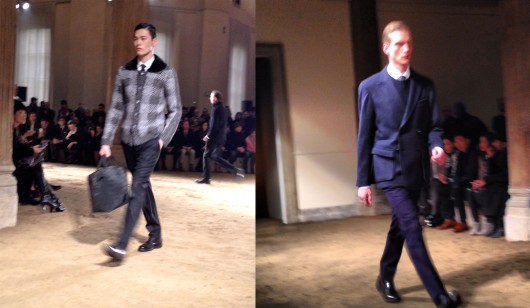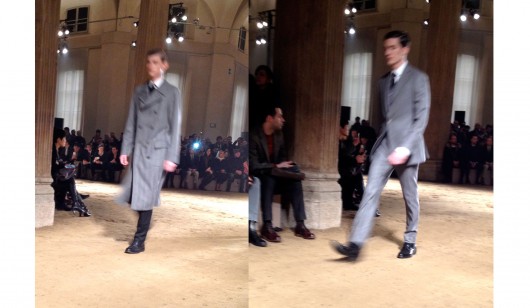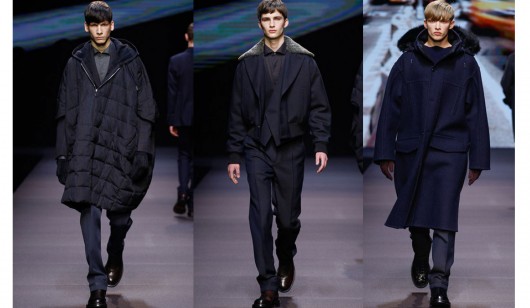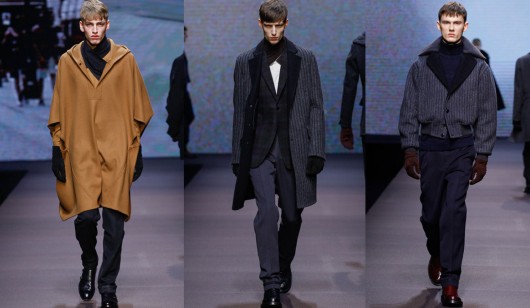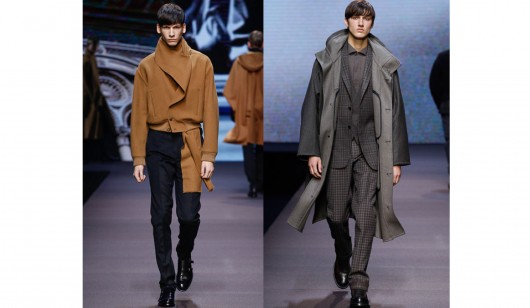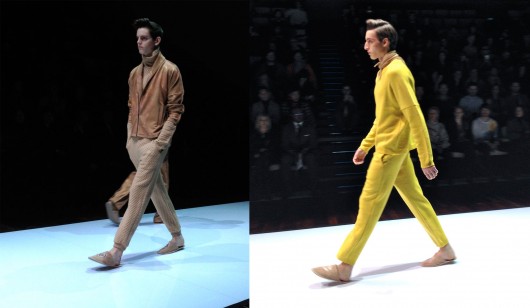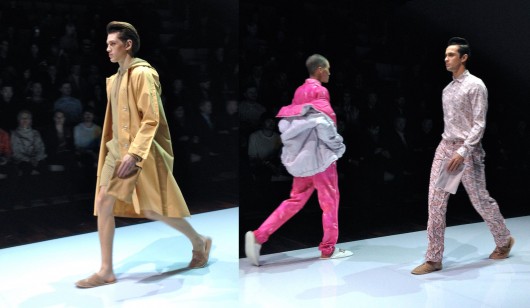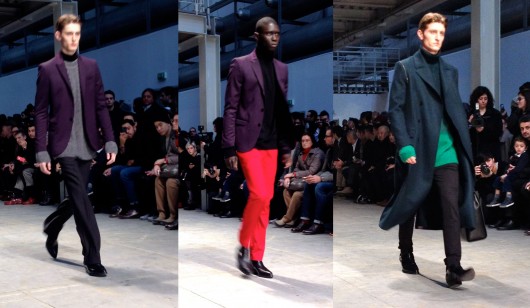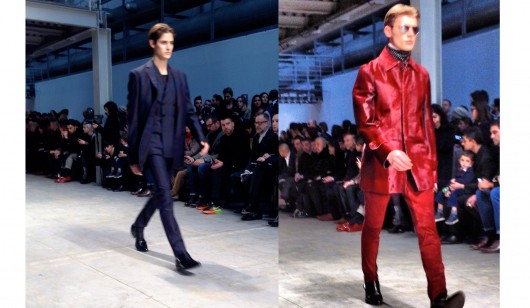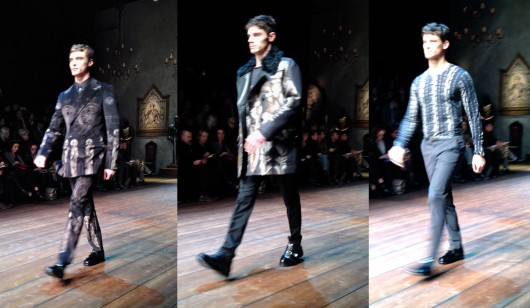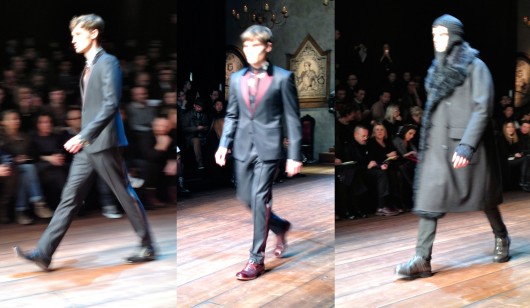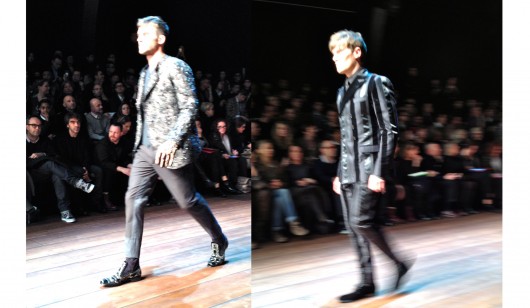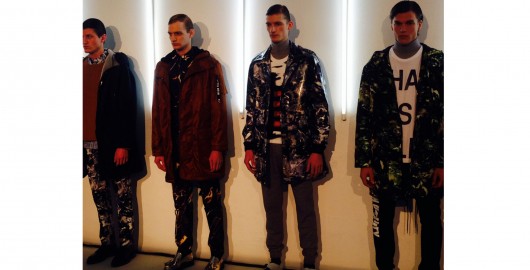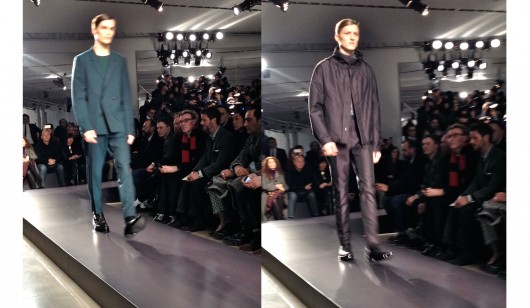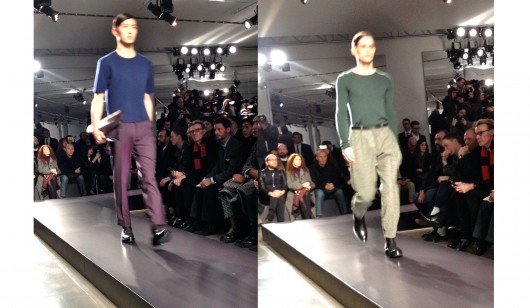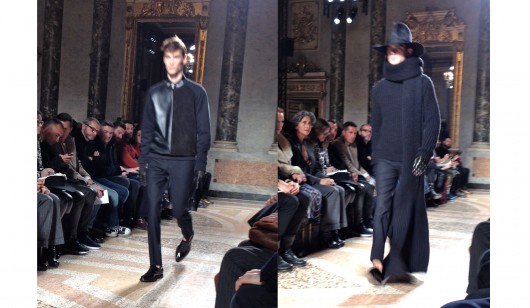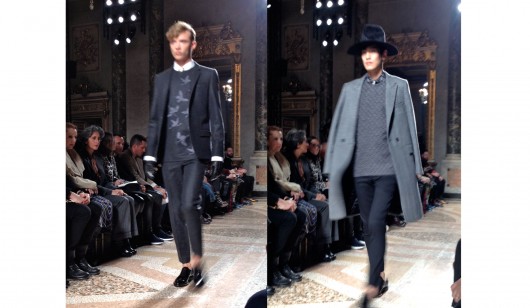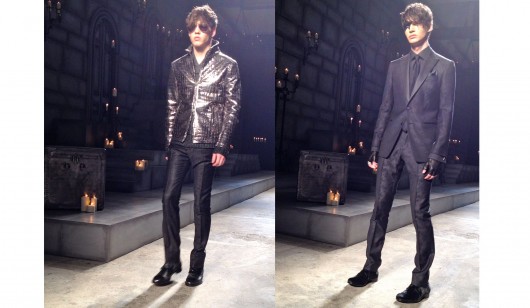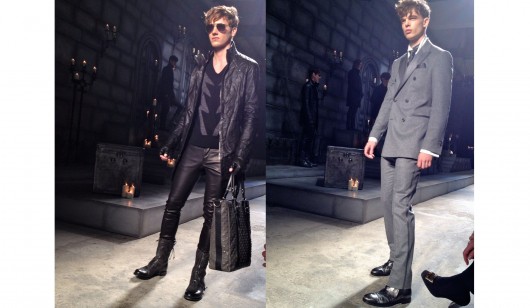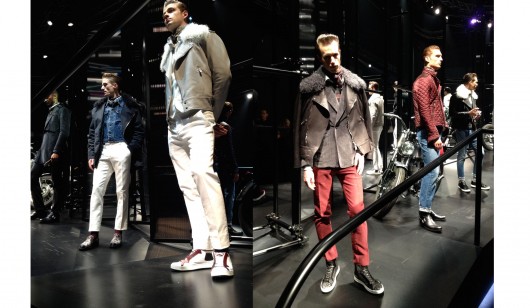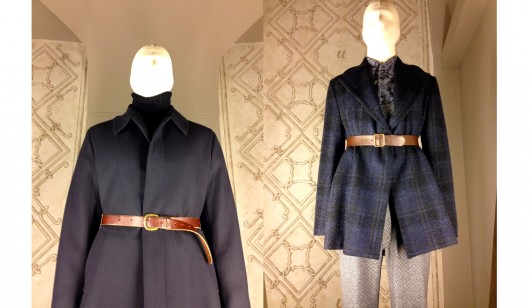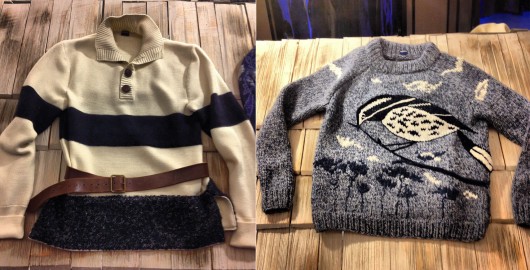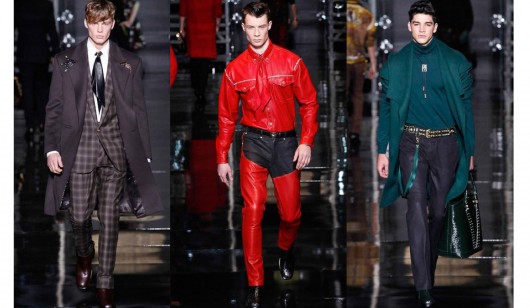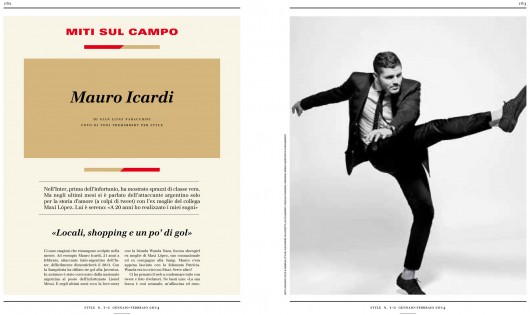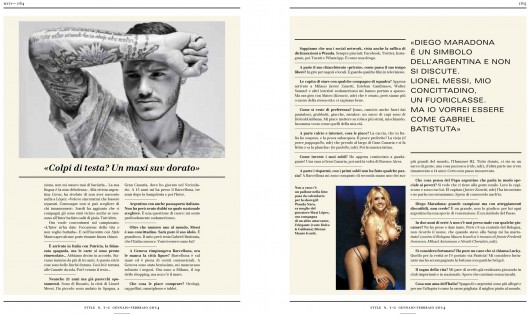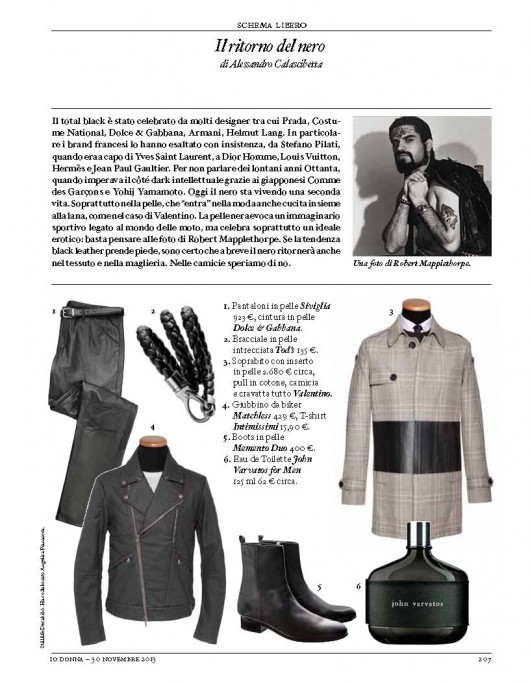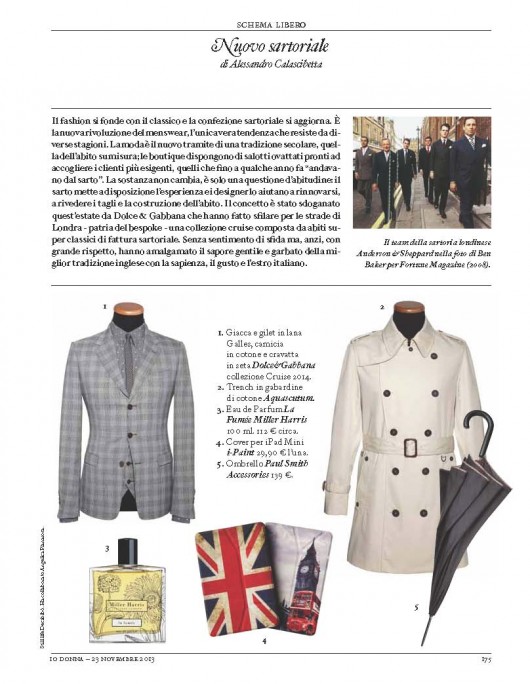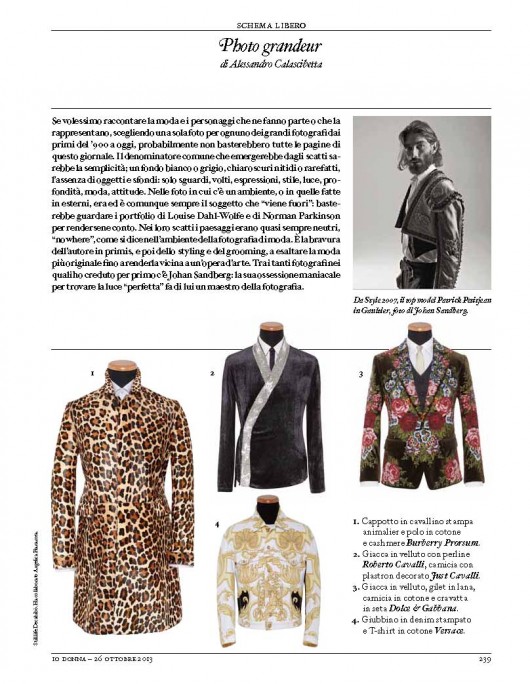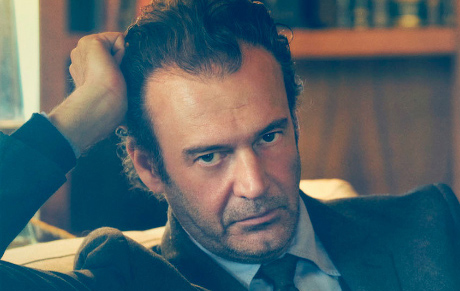MILANO MODA UOMO FALL/WINTER 2014-2015 GIORNO 1
CORNELIANI
Punta sul blu navy e sul grigio chiaro. Le forme sono asciutte e i tagli rigorosi, ma suadenti. Una tra le sue collezioni più raffinate.
ERMENEGILDO ZEGNA
Superba. Nei tagli, nello stile, nello styling e nelle stoffe. Pilati prende una direzione che si allontana un poco dalla prima collezione: punta meno sul classico/tradizionale e volge lo sguardo ad uno stile geometrico e solido, con particolare predilezione verso un classico/sportivo che – in alcuni capi – ricorda il meglio delle sue sfilate per Yves Saint Laurent.
JULIAN ZIGERLI
Interessante. Se dovessi attribuirgli il rilancio di una grande maison che al momento non ha un direttore creativo, scommetterei su Jil Sander. Bravo.
COSTUME NATIONAL HOMME
Abiti con forme morbide, maglieria in cashmere e mohair, blazer sovrapposti, lunghi paletot sagomati e fluidi: blu, grigio. Tinte classiche: pochi i punti di colore, saggiamente dosati per spezzare la monocromia. E’ stata la sorpresa della prima giornata di MFW: Ennio Capasa rivede il suo stile a favore di una moda molto moderna, ma su base tradizionale. Addio rock. Bellissima.
DOLCE & GABBANA
L’ispirazione della collezione – o almeno di una parte di essa – è tratta dai Re normanni, che conquistarono la Sicilia nel 1061. E questo accontenta le “aspettative fashion”, le accontenta appieno, alla faccia di chi dice che la moda maschile non c’è più. La zona del classico questa volta è più affusolata e strong del solito. Lo è perché Dolce & Gabbana abbandona – almeno per il momento – il consueto abito nero con camicia immacolata e cravatta scura e sceglie i toni del blu e del grigio, abbinandoli a camicie bordeaux, verdi e marroni. La maglieria, ricamata ad effetto armatura, è più ricca che mai. Dietro questa collezione, c’è un lavoro immenso. Encomiabile.
MSGM
Molto street. Grafismi pop di gusto anni ottanta mixati al tartan, all’oro lucente el camouflage.
JIL SANDER
Una bella sfilata in un momento di transizione per il brand. La signora ha lasciato da poco ma la collezione rispetta il suo codice estetico/culturale: il suo team ha svolto un ottimo lavoro. Pulita, sofisticata, completa, senza impennate. Come era giusto che fosse.
LES HOMMES
Una bella dimostrazione: Les Hommes mantiene egregiamente i suoi punti di riferimento – come il knitwear lavorato e le stampe originali – ma con uno sguardo contemporaneo e più attento anche alle esigenze di un pubblico tradizionale.
JOHN VARVATOS
Classico/Rock o Rock/Classico? Gli abiti sono belli, la parte più strong anche. Due collezioni in una. Speciale.
HOGAN
Una bella sorpresa. Look quasi totali: oltre alle calzature e alle borse, Hogan completa la collezione – questa volta in modo davvero convincente – con bellissimi capispalla sport/chic, felpe e perfino foulard in lana.
UMAN
Collezione di rara bellezza e raffinatezza. La maglieria è lavorata con innovazione e un gusto originalissimo che rimanda ad un passato che piace, un passato al quale siamo tutti affezionati. I capispalla e il resto, sono sviluppati con grande maestria grazie a fantastiche lane, flanelle e cashmere.
VERSACE
Forza e opulenza. Sfarzo e Vanitas. Il carattere della collezione riconferma anche questa volta l’iconografia e il DNA della sua storia, ma aggiunge uno sforzo notevole nella costruzione di un concetto sartoriale, che per Versace, è piuttosto inedito.





